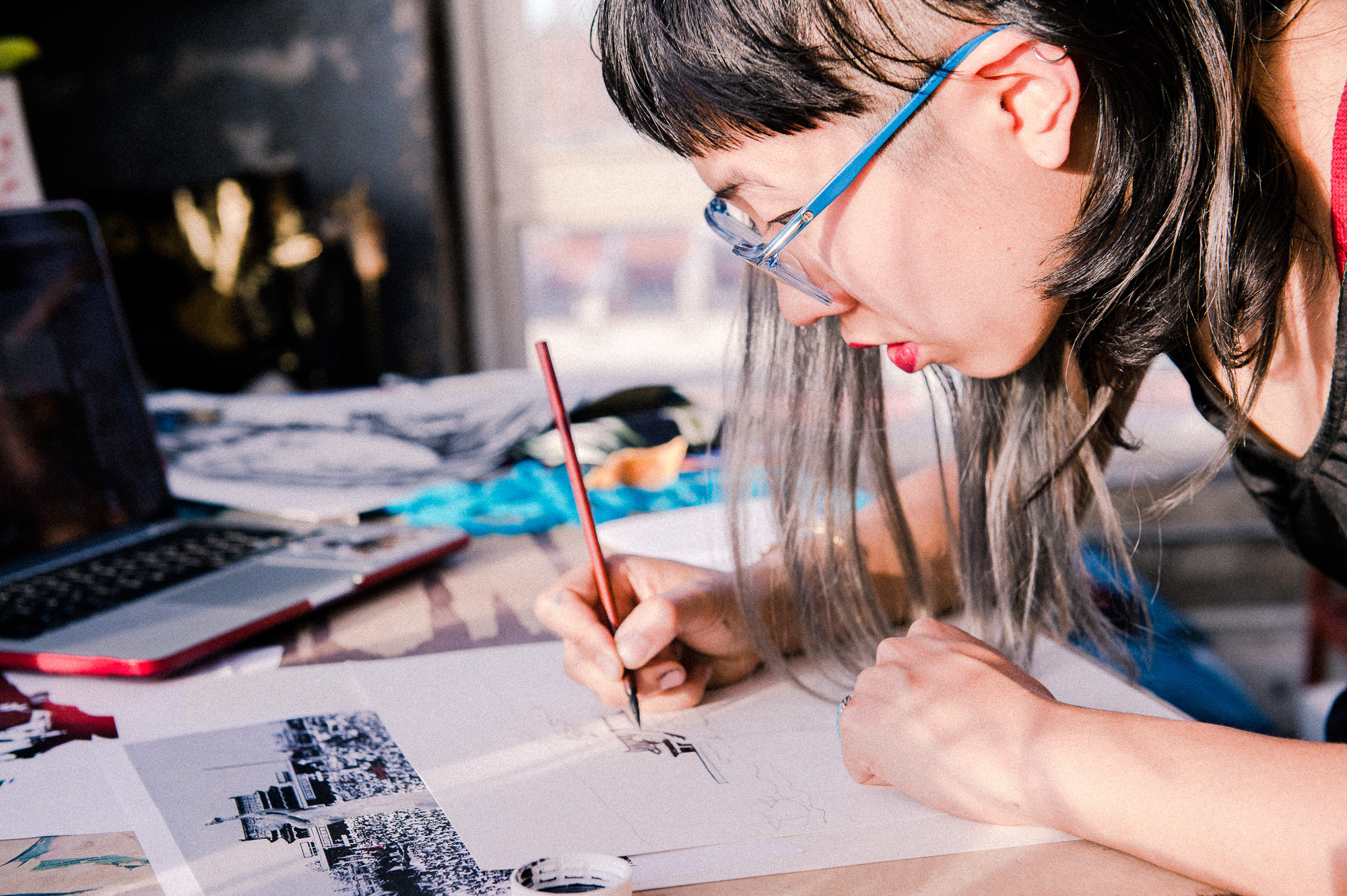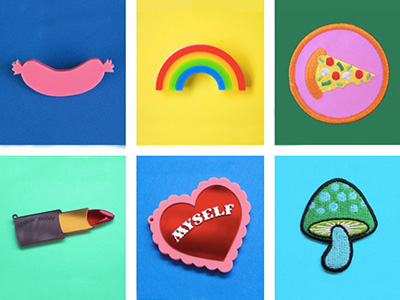Jess X. Snow tells stories in illustrations, poetry, and film. She folds all of those media into the animated short Migration Is Natural, an inspiring piece that depicts a shared human experience through Snow’s autobiographical lens.
Snow was born in Canada to parents who immigrated from China after the Cultural Revolution. When she was six, her parents divorced, and her mother moved with Snow to the United States. Those two splits—from her country and family of origin—left indelible marks of pain on the young girl. As a result, she developed a stutter, which made her turn deeper inward.
And then, at 10 years old, she discovered art. “I would stay up nights writing poetry or drawing my own surreal dreamscapes,” Snow recalls. “Everything was unstable, and art was the only way I could define a future for myself that was free of borders and free of the trauma of my past. I could cultivate my own voice without the fear of what people would say or that I would stutter.”
For Snow, art is also a way to travel through time and space. “Ancestors who are not able to be visited or friends who are divided by borders can come together in a new world that exemplifies the future I want to see,” she says. “Migration Is Natural is about that imagined reality. Sometimes we imagine things out of a deep necessity—it’s what helps us survive.”
Click the above image to watch Migration Is Natural.
The sweeping imagery of Migration Is Natural is based on Snow’s own illustrations, and the script is her poetry, which she narrates.
THE MAKING OF MIGRATION IS NATURAL
The film was born when Project 1324 (an Adobe initiative that supports emerging artists) approached Snow about a potential project. “They wanted it to have an autobiographical component yet also tie people together,” she says. “We decided the right story to tell would center on the queer person of color migration narrative. It would offer a beacon of hope while addressing the reality of the risks and traumas that people who migrate face.”
Using pen and ink, Snow created 20 illustrations to serve as keyframes in the animation. She added colors with paint and in Adobe Photoshop CC.

Snow illustrating one of the film’s keyframes.
Snow partnered with director Patrick Weishampel and a team of animators and sound designers to execute the film. “One of the things that made it successful is that Jess’s work already has a sense of movement,” Weishampel says. “We pulled pieces from her keyframes to create cell animations.” Weishampel also drew on videos of Snow’s mother and his research into China at the time of the Tiananmen Square protests. The team used Cinema 4D for some animation and Adobe After Effects CC for assembly and additional animation.
Snow and Weishampel’s team collaborated closely throughout the process. “I was the only one who had this migration experience,” Snow notes. “What made the project so good was that we were able to trust each other. Maybe that’s what solidarity is supposed to be like.”
LOOKING TO THE FUTURE
This fall, Snow will attend film school for an MFA. While she intends to become a film writer and director, she won’t abandon her other art forms. “I want to keep doing public art projects, and I’m working on two manuscripts of poetry. I will always be multidisciplinary, but the main thing I want to do in all these media is to bring stories of queerness and migrant people of color to the forefront of the American narrative, and to show how our protection of the earth and the care that we have for our communities and love is all entwined. I want to show young people that the hardest things can happen to them, they can be separated from their culture and their homeland, they can lose their voice, but then through art and community, they can create a luminous and impenetrable home for everyone they ever loved."
You can follow Jess X. Snow on Instagram and find out more about her and her work on her website.







